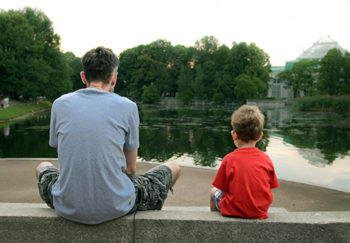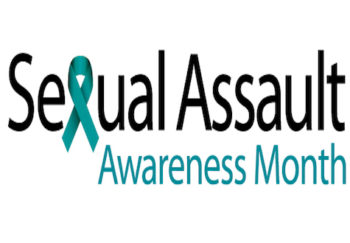
For Sexual Assault Awareness Month, we’re asking teenage sex education experts about how to teach teens to make healthy choices.
The issue of sexual assault prevention remains controversial, given the stigma attached to teaching young people about sex.
For example, while Virginia managed to pass a bill just this year mandating teaching consent to high school students, many were disappointed that the state Senate killed the part of the bill requiring sex education classes to cover sexual assault and domestic abuse.
And yet much of the work of prevention requires education.
M.A. Sullivan has served as a sexual health educator at UVA and in area schools for over 30 years. We met with Sullivan and 4th-year UVA medical student, Brian Wakefield, at the UVA Health Children’s Teen and Young Adult Health Center to learn about the risks and challenges today’s middle and high school kids face when it comes to adopting healthy sexual attitudes and behaviors.
Teenage Sex Education: Too Little, Too Late
Unsurprisingly, given the persistent stigmas surrounding sex education, Sullivan finds the current curriculum offered in schools lacking.
“People have no idea how little is done and how poorly it’s done,” she says. “If a math class (for which there is SOL testing) was rendered like health and family life education, the lack of depth and accuracy would be unacceptable. When I’m in the schools, I spend much time correcting mistakes and addressing inaccurate and/or dated information. And, this is NOT intentional; it simply speaks to the lack of training and education for those charged with instruction.”
The aversion to talking about sex at all tends to mean that educators and parents, both of whom can find the topic uncomfortable, avoid talking about it in real-life terms.
Sullivan notes that some kids become sexually active at a younger age than most adults want to acknowledge.
“I’ve seen, over the years, several young women pregnant in middle school, and the assumption’s always been that they were having sex with someone much older than them or that someone was exploiting them. But there’s sexual experimentation between 12-year-olds, with its possible attendant consequences.”
Stats: The State of Teenage Sex Education
- About one in five teens reports some kind of a abuse in a romantic relationship.
- Every hour, about one young person in the United States is infected with HIV.
- Percent of teens who do not receive formal instruction about contraception before they first have sex: 43 percent of males and 57 percent of females.
Get more statistics about teens and sex.
Kids & Porn
The gap between the sexual education kids receive and the sexual activity kids perform means children go searching for information — online.
“I’ve heard 6th-grade boys say they’re addicted to online porn,” Sullivan reports. “They don’t have anywhere else to go to learn about sexual activity. I worry about where these kids are in their cognitive development, how they interpret what they are viewing. Even if the young men are in high school or college, they may be internalizing what they see, and it may affect their abilities to have healthy relationships.”
Pornography, in other words, shapes kids’ perception and behavior, and this often happens before any adult, teacher or parent, offers any instruction or perspective.
Sullivan’s often seen kids feeling confused. She talks about 8th-grade boys, for instance, who had heard about sexual harassment, but had not received education about it in terms they could understand.
“They had difficulty understanding why certain behaviors might be inappropriate. I had to explain that you don’t know, when you put your hands on someone, how the person might feel or what your actions might trigger. We wait a little too late on that.”
Ignorance is Dangerous
Another effect of the information gap: Kids don’t know how to protect themselves. “There’s the clinical setting and then there’s what you learn online, and not a lot in between. So, in the practical setting, when you’re at the club and you go home with a boy, he doesn’t know where to put things. Or how to put things on,” Brian points out, referring to condom use and other sex-related safety measures.
Self-Esteem for LGBTQ Youth
The lack of education and turning to porn doesn’t just hurt heterosexual kids. “We don’t teach the queer kids,” Brian says. “And since they’re not taught by someone they look up to and respect, they go to the internet and go to pornography, and straight, heterosexual pornography is made by men for men, it’s derogatory.”
LGBTQ kids don’t only receive a very skewed version of sexual interactions, but their self-esteem and understanding of their own identity can suffer, too.
Sexual Agency
And because “porn tends to not deal with women’s pleasure, women have no idea how to advocate for themselves sexually. It’s not being taught, it’s not being modeled; if they watch heterosexual pornography, they’re expecting to be abused, expecting their needs not to be met, expecting to be objectified.”
To Sullivan and Brian, if sex education avoids teaching sexual agency — the ability for men or women to know and advocate for what they want or need — “then you’re not teaching them how to know when that agency is being violated or being pushed. You’re not teaching them how to recognize when assault is happening if they’re acculturated to think, ‘oh I’m just supposed to roll over and take it.’”
Messages to Boys and Girls Conflict
Sullivan tells story after story of kids getting different messages about sex based on gender.
“If you’re talking about a straight couple, you’ve got a young man who’s been told that, to be a man, you’ve got to have sex with as many partners as possible, and if a girl has sex with you, she’s a ‘slut.’ It’s insane. Girls are told not to wear provocative clothing or binge drink. Of course, you shouldn’t binge drink. But in this context, this is blaming the victim.”
This leads to what Sullivan identifies as “slut-shaming.” She finds the practice everywhere. “It’s the teaching method of choice for health and PE teachers for young women. If you have sex, you’re a ‘slut.’”
Again, this message affects self-esteem, as well as giving boys and girls completely opposite messages that tend to reinforce gender stereotypes and power imbalances. The resulting social dynamic permits, and even somewhat encourages and rewards, aggression and abuse.
Steps You Can Take
Whether you’re a parent, guardian, teacher or relative of a teen, you can take steps to empower kids.
Talk About Sex
Sullivan and Brian acknowledge that talking to kids about sex can feel awkward, for youth and adults alike.
Even so, Sullivan says, the conversations need to happen.
“If you can’t just have a practical, matter-of-fact conversation – and this is what I talk to kids about in middle and high school – then you don’t model how to have a conversation with a potential partner.” Open dialogue about sex empowers kids and gives them the ability to maneuver sexual relationships in mature, healthy ways.
Discuss & Model Healthy Boundaries
An important piece of this conversation includes addressing boundaries.
“Whether talking about a sex offender or a kid in class who keeps touching you, you can make it clear that if somebody touches you or says something to you that makes you feel uncomfortable, you own yourself,” Sullivan explains.
Actions do speak louder than words, though. “I think we as parents and adults need to model respecting our children’s boundaries,” says Sullivan. “We impose our power on them, and they can’t say no back, and then we expect them to negotiate that, after what we’ve modeled for them?”
Brian adds that building trust with a child is key. If we want kids to report abuse, unwanted pregnancies or STIs, and we’re not “modeling openness, then there’s no chance they’re going to do that. If I’m snooping around and invading their privacy, then that’s another wall they’re going to throw up.”
Get Kids to Engage
Sullivan’s strategy when working with youth does not follow an approach of dictating a list of rules. Instead, she finds it more effective to challenge kids to generate their own ideas of what choices they want to make.
“I have kids come up with reasons why postponing sexual activity is a good thing. I ask them, what are possible consequences, physical and emotional, of sexual activity? And I encourage them to brainstorm their own reasons about why they might decide to wait.” This approach gives kids the chance to take ownership over their own choices.
Does Your Teen Have Questions About Sex?
We can help you educate and work with your child, whether they’re sexually active or not. Find out more about our teenage sex education services at the UVA Teen and Young Adult Health Center.
Don’t Have ‘The Conversation’ Just Once
Sullivan encourages parents, as well as educators, to view conversations about sex as occurring over time, not happening in a single event.
She says, “I have parents who come to me all the time talking about how they’ve answered something wrong and made mistakes and I say, ‘That’s the great thing about being a parent: you have lots of do-overs. All the time. We make mistakes all the time. You’re not going to undo everything with one conversation that didn’t go the way you wanted it to.’ “
And that’s OK.
“They take in information at their own pace, as their brains are able to conceptualize and contextualize the information. That’s why it sometimes feels as if they ask the same questions over and over again.”

